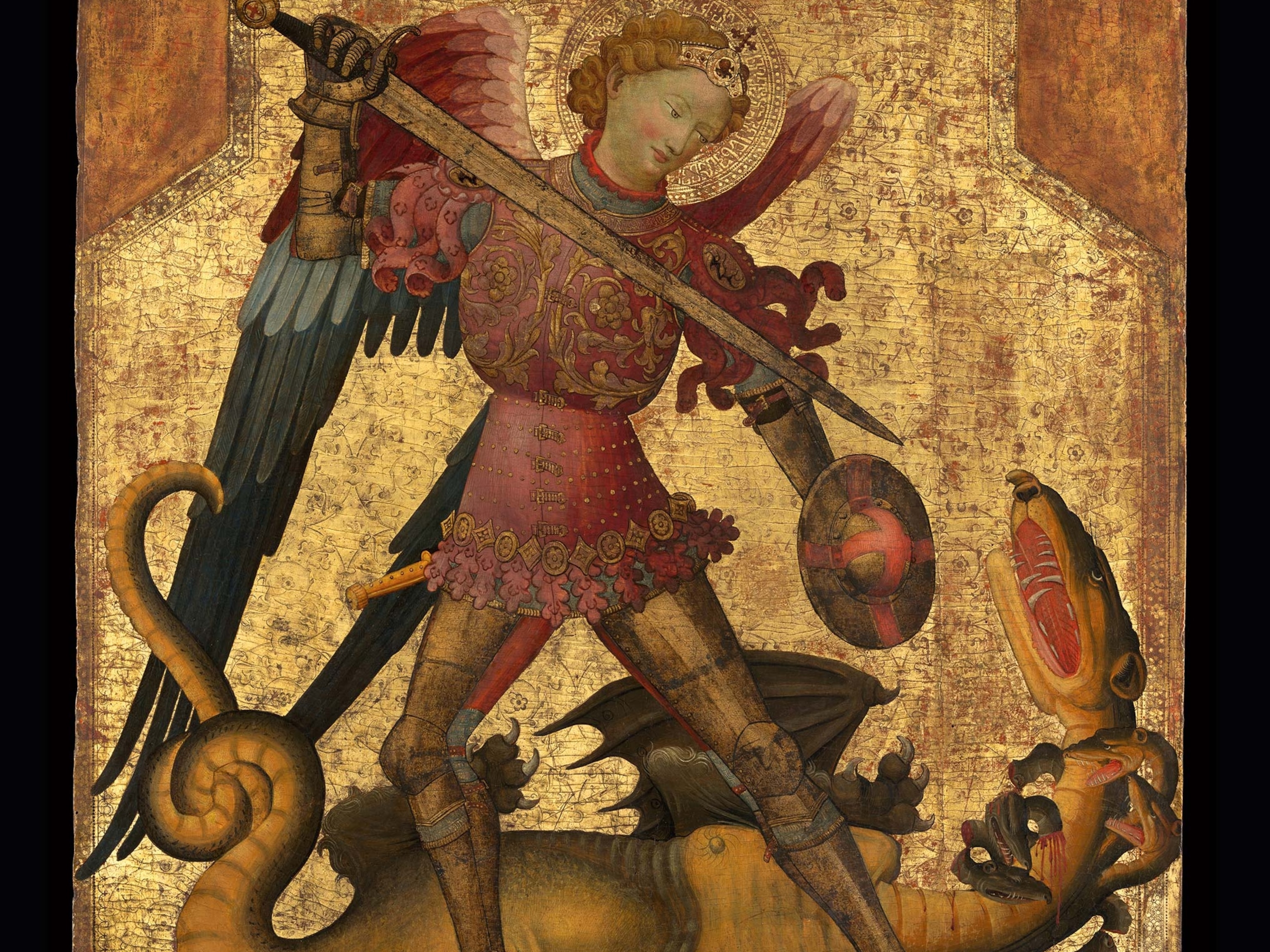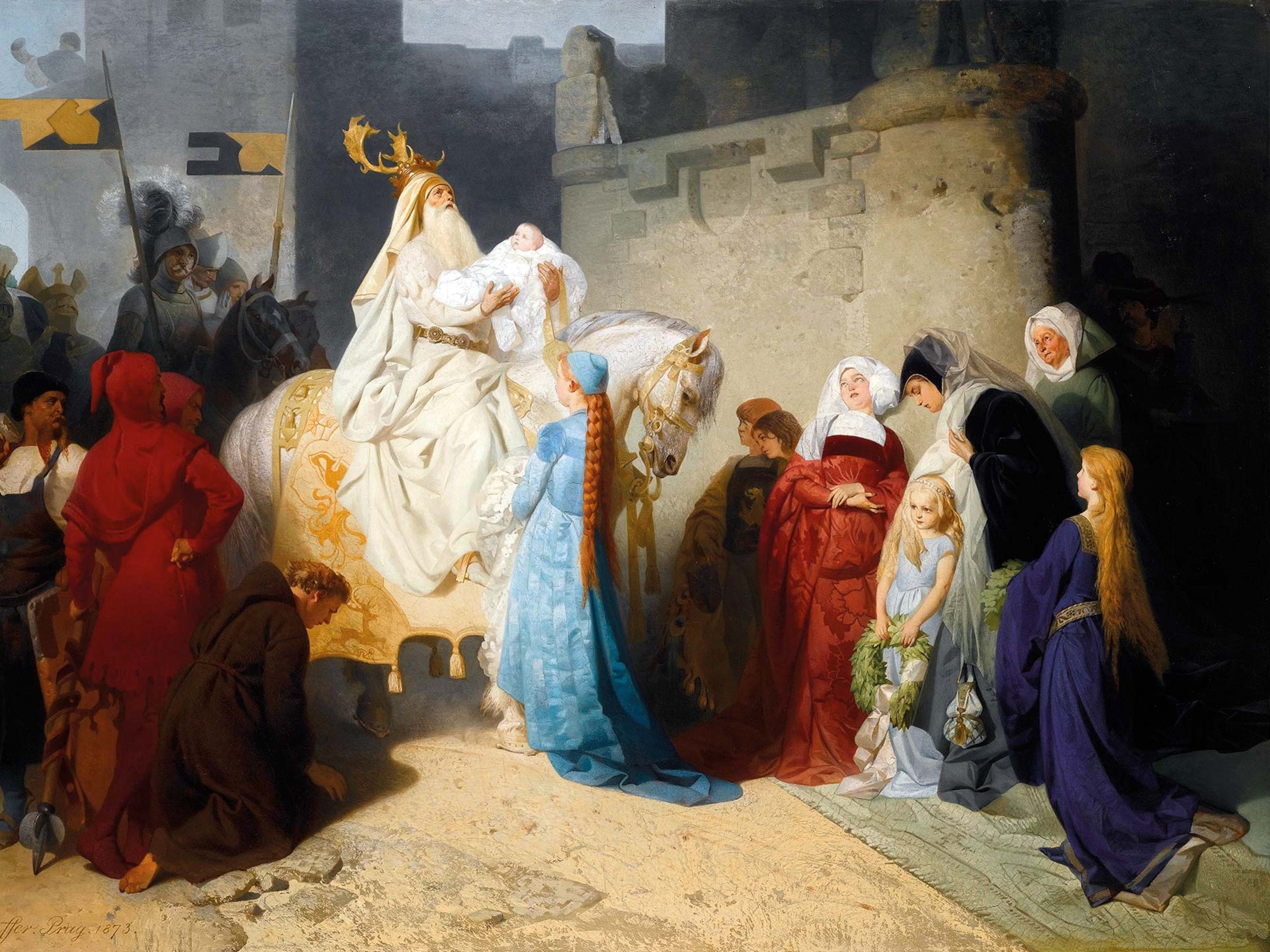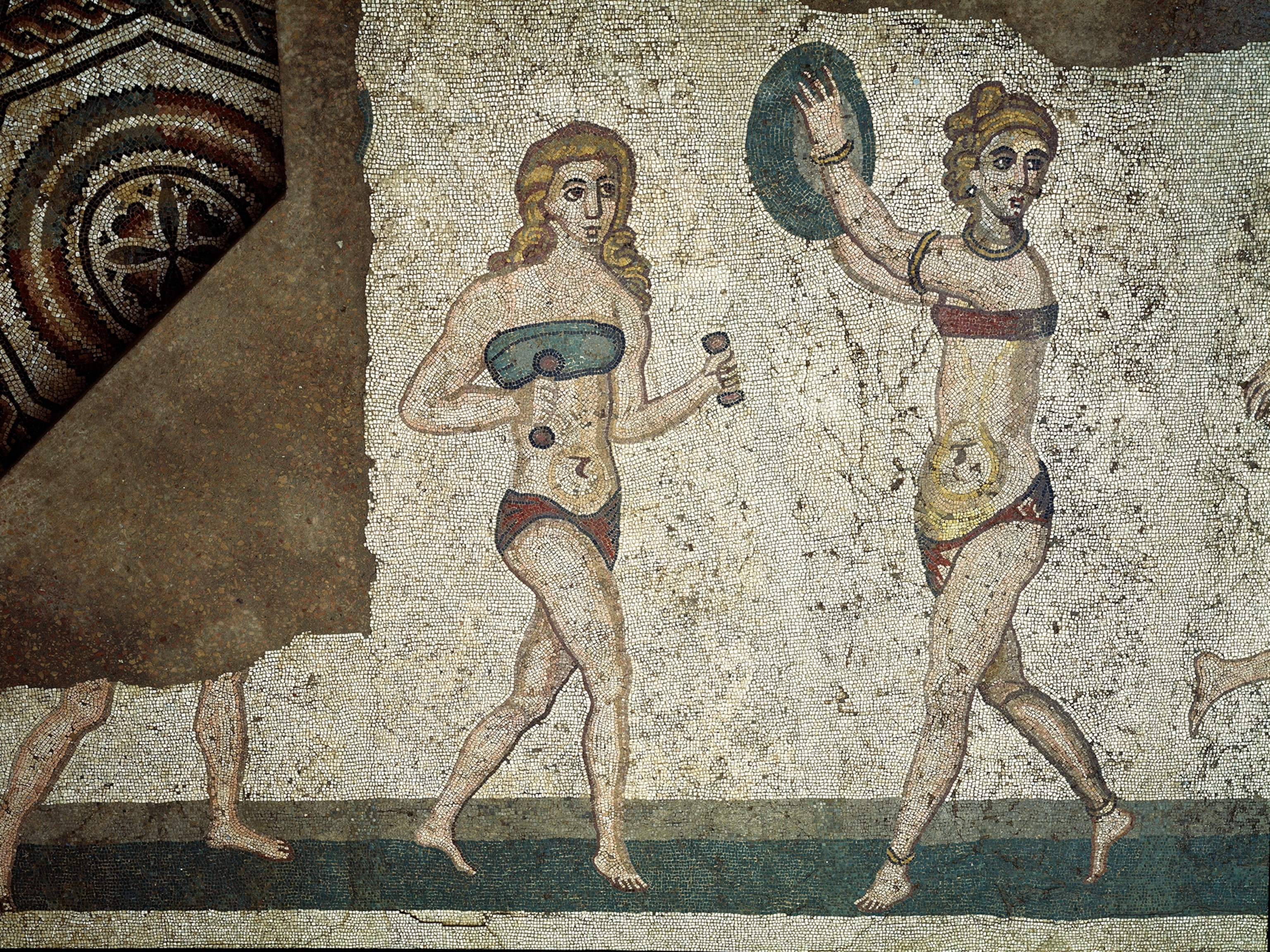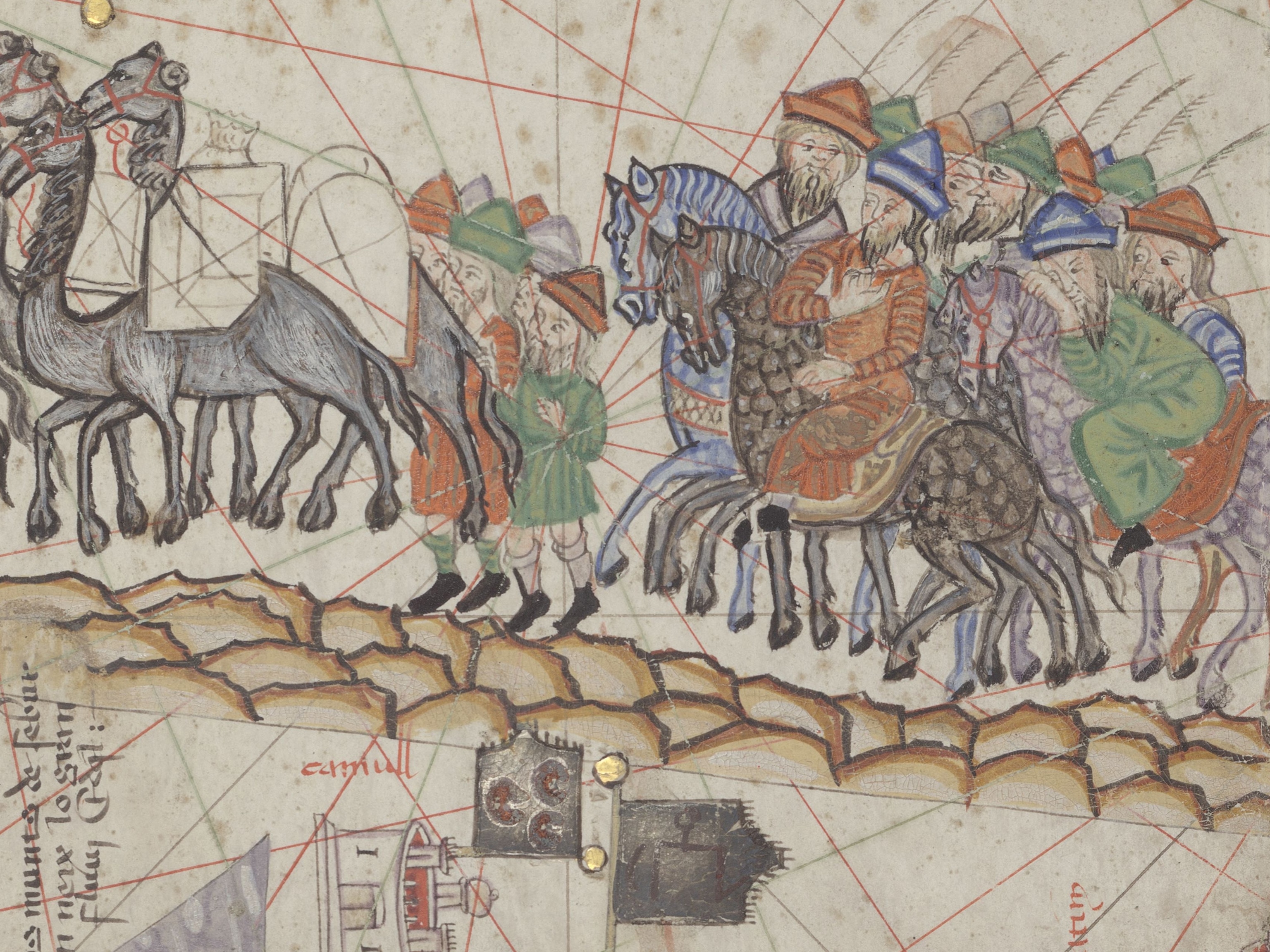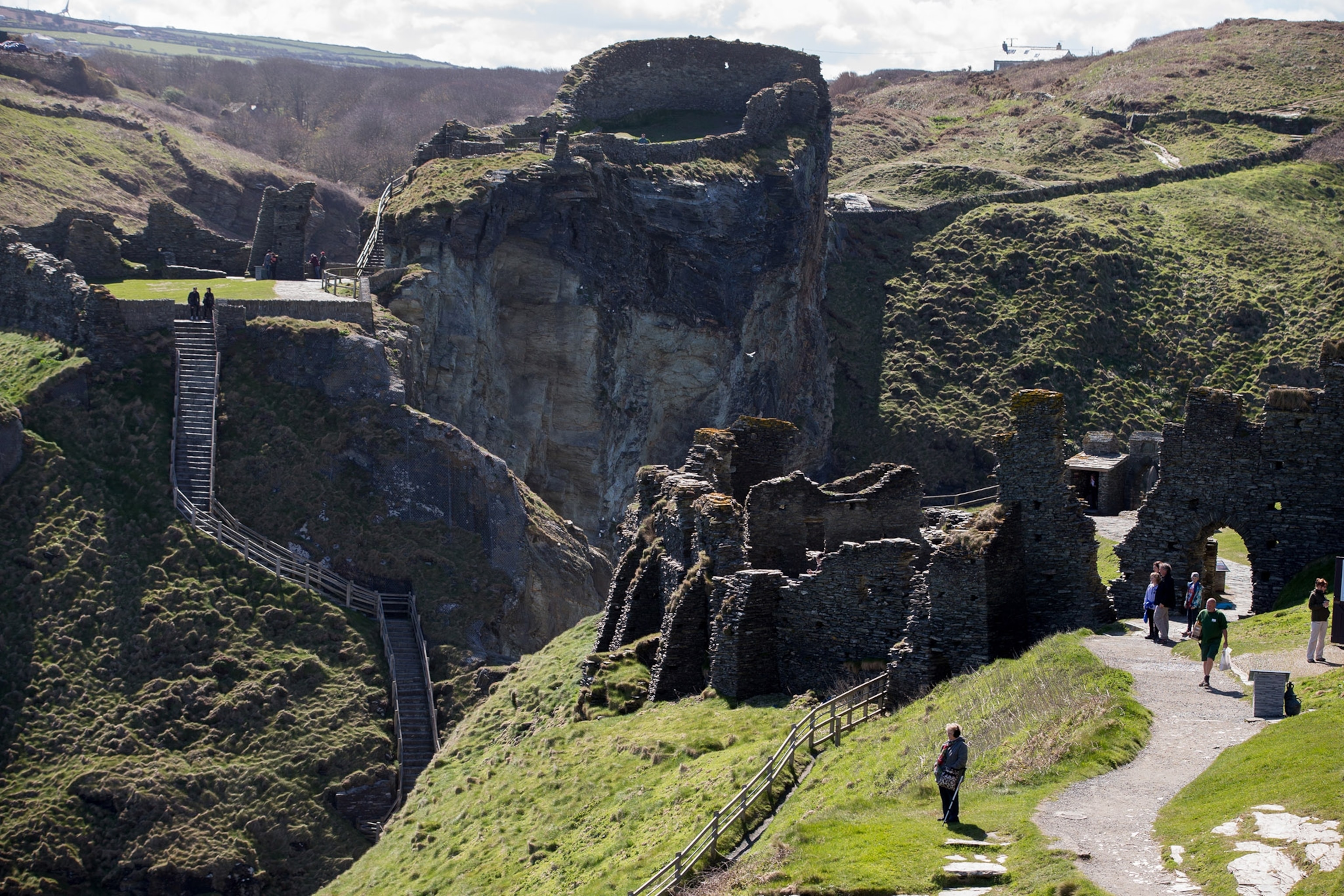
Not-So-Dark Ages Revealed at King Arthur Site
Luxury goods unearthed at royal stronghold show that Celtic rulers thrived at the legendary site of Tintagel.
A recent discovery in southwest England is making headlines for its association with King Arthur, but archaeologists are hailing it as an incredibly important find regardless of any connection with Britain's greatest legendary ruler.
Excavations at Tintagel, a rocky promontory on the coast of Cornwall, have revealed evidence of massive stone fortifications and luxury goods imported from as far away as modern-day Turkey, all dating to a poorly understood period in British history that began with the collapse of Roman rule on the island around 400 A.D.
The earliest mentions of a leader named Arthur in the historical record are tied to events that occurred between roughly 400 and 600 A.D., the period in which archaeologists believe the fortifications at Tintagel were built. According to an account written centuries later, the legendary king was conceived at Tintagel.
Luxury Trade During the So-called "Dark Ages"
Over the summer, archaeologists at Tintagel have found evidence for more than a hundred buildings that most likely date from the fifth to seventh centuries A.D., a period when the site is believed to have been an important royal stronghold of the Celtic kingdom of Dumnonia.

Initial evidence for the Celtic stronghold was first revealed during excavations in the 1930s. Unfortunately, the home of C.A. Raleigh Radford, lead archaeologist on the project, was bombed during World War II and the scientific results were never properly published. In the 1990s, archaeologists reopened Radford's trenches at Tintagel and discovered fine ceramics and glassware from all over the Mediterranean world.
More than two decades later, researchers have returned to Tintagel for the beginning of a five-year project funded by the charity English Heritage to better understand what was happening at the site during a time erroneously referred to by some historians as the "Dark Ages," and by others as "Sub-Roman" or "Post-Roman."
Why were coastal trading posts like Tintagel mysteriously abandoned in the seventh century?
Although only a few trenches in undisturbed areas of the site were excavated this summer, they exposed massive rock walls—some more than 3.3 feet (one meter) thick—that are the most substantial structures known from the period. Hundreds of small finds provide more evidence for imported luxury goods transported from the sunny shores of the Eastern Roman Empire to this blustery British outcrop.
Scholars believe the people of Dumnonia traded local tin in exchange for these fancy products, as well as possibly slaves and hunting dogs.
A Poorly Understood Period
Archaeologist Susan Greaney, a senior property historian with English Heritage, is quick to dismiss any connection between Arthurian legend and the new finds at Tintagel. "The Arthurian connection is a purely literary, legendary connection," says Greaney. "There's absolutely no way we would start a research project [with the goal of] looking for Arthur."

Critics attacked English Heritage earlier this year for "Disneyfying" Tintagel's Arthurian connections after the charity commissioned a likeness of Merlin carved into the cliffs at the site.
Greaney stresses that the focus of the five-year project is to better understand cosmopolitan life in ancient Dumnonia—who the people were, what they traded, and why many of the coastal trading sites like Tintagel were mysteriously abandoned in the seventh century A.D.
"We know more about Stonehenge than we do about some of these sites," she says.
Arthur: Reality and Legend
While some scholars are firm in their belief that King Arthur is merely a literary invention, others are more circumspect. "We don't have evidence to prove his historicity, but we certainly don't have evidence to prove he's manufactured, that he's a completely fictional character," says Christopher Snyder, dean and professor of history at Mississippi State University and author of The World of King Arthur.
Almost everyone in the Middle Ages believed that there was a historical Arthur.Christopher Snyder, Historian
"Whether we academic historians believe it or not, almost everyone in the Middle Ages believed that there was a historical Arthur," Snyder explains. "There's a great potency of power to that myth."
The association of King Arthur with Tintagel was already wildly popular in the 12th century, following an account of Arthur and his exploits recorded in Geoffrey of Monmouth's Historia Regum Britannie (History of the Kings of Britain). According to Geoffrey, Arthur was conceived at Tintagel after his father, Uther Pendragon, disguised himself (with the help of Merlin) as a local ruler and slept with the ruler's wife.
A little more than a century later, Richard, Earl of Cornwall, and the brother of King Henry III, built a castle at Tintagel, presumably to cement his family ties with those of King Arthur. By the 14th century, kings of England were regularly celebrating the legend with replica Round Tables, Arthurian pageants, and honors that are still awarded by British royalty to this day.
Even the name of the fabled king has been carried into modern aristocracy (see Prince Charles Philip Arthur George and Prince William Arthur Philip Louis), but the royals have been reluctant to introduce a new Arthur into their family tree.
"Most of the Prince Arthurs have died young and tragically," Snyder explains. "It's not a good omen to do that."
Follow Kristin Romey on Twitter.


